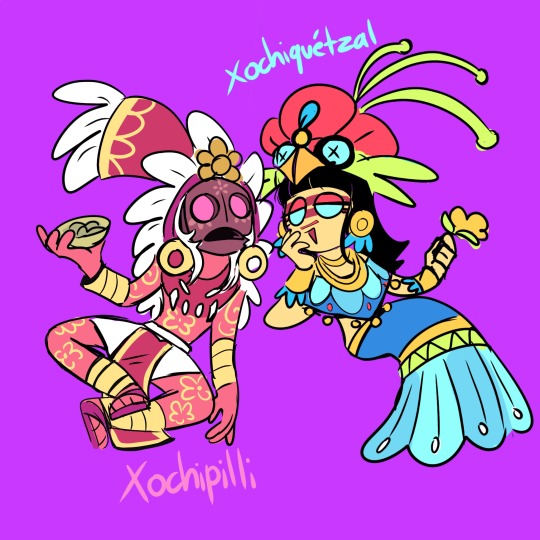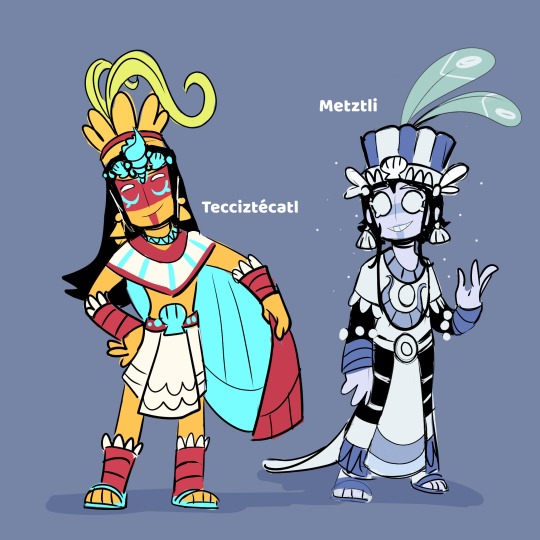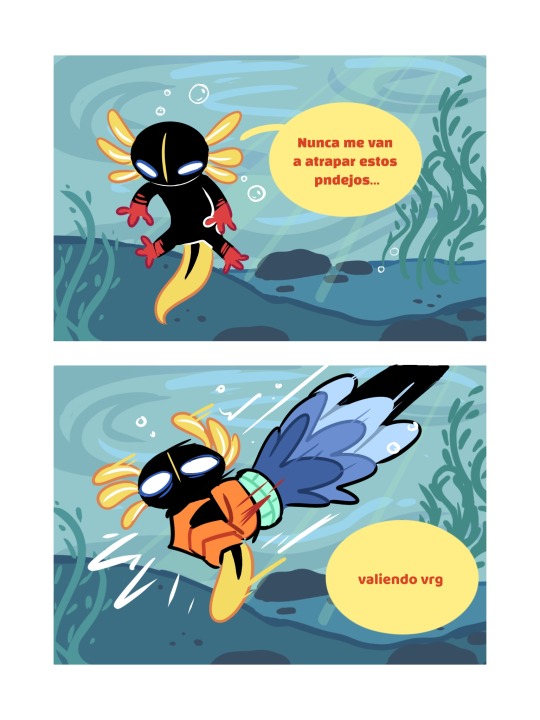#mexica mythology
Text
not me being quite upset by how little talk there has been (amongst mexicans/center latinos) about how Talokán was beautifully adapted from its mythological concept/inspiration, I was loosing my mind.
Allow me to give y’all a little of mythological context because I am a history nerd and the Mesoamerican cultures and mythology are very rad.
(A spoiler ahead with my interpretation)
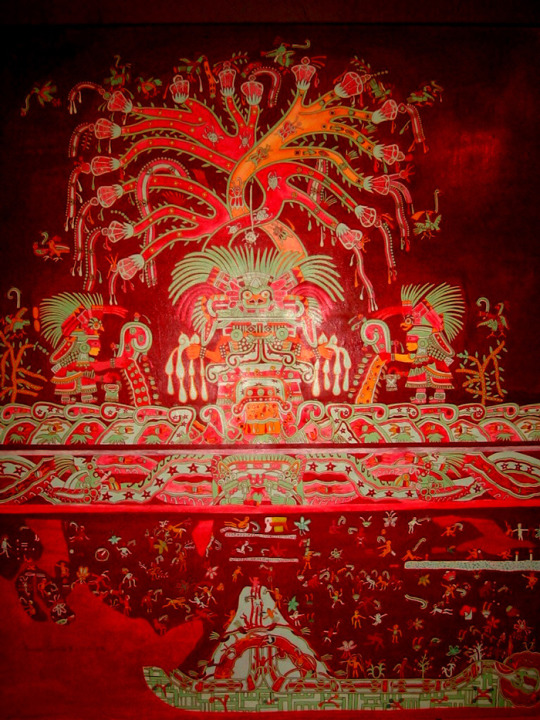
Culturally wise, Talokán and its culture take a major inspiration from Maya/Aztec cultures, but the name of the place is strikingly resemblant to that of the Tlalocan from the Mexica culture.
One of the most beautiful heavens/paradises.
The Tlalocan is ruled by Tlaloc the (Mexica) god of lightning, rain, earthquakes, and agriculture. This place was described as a paradise from which the waters that benefited life on earth flowed; in this place resided Lord Tlaloc's favorites, those who died: 1) drowned, 2) of leprosy (as well as the bubonic, mangy, gouty and hydropic), 3) fulminated by lightning.
It was said that the souls that dwell in this paradise are extremely happy and would enjoy the fullness of a place where there would always be cornfields and all kinds of herbs that were green and fresh, and fragrant flowers.
I also noticed a little wink with his Maya counterpart Chaac who dwelt in caves and cenotes, the entrances to the Mayan underworld, the Xibalbá.
With this information in mind, you can imagine how I was loosing it when Namor explained what happened before and after he was born and how it brilliantly aligns with some of the conditions of HOW TO ENTER INTO THE TLALOCAN.
Magical plant aside (which was found underwater in the entrance to an underwater cave/cenote, and the future civilization resides in/is a literal underworld), they were dying of Small pox (if I remember correctly) and that easily falls under condition #2 for a soul to enter the Tlalocan; after ingesting the plant they did die but condition #1 is also fulfilled because they can no longer reside on the surface because they would “drown”/suffocate.
I'm so overjoyed how well portrayed/adapted/researched everything was, and as a history nerd and Mexican I’m very proud of how my culture was represented, this movie overdelivered even in the mythological.
LÍIK'IK TALOKAN!

#wakanda forever#black panther#marvel#wakanda forever spoilers#namor#mcu namor#talokan#mexico#mexica mythology#marvel cinematic universe#mcu#black panther 2#tenoch huerta#mythology#maya mythology
1K notes
·
View notes
Text
I've been fascinated with the Aztec god Xolotl recently.
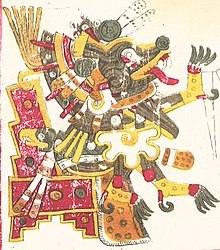
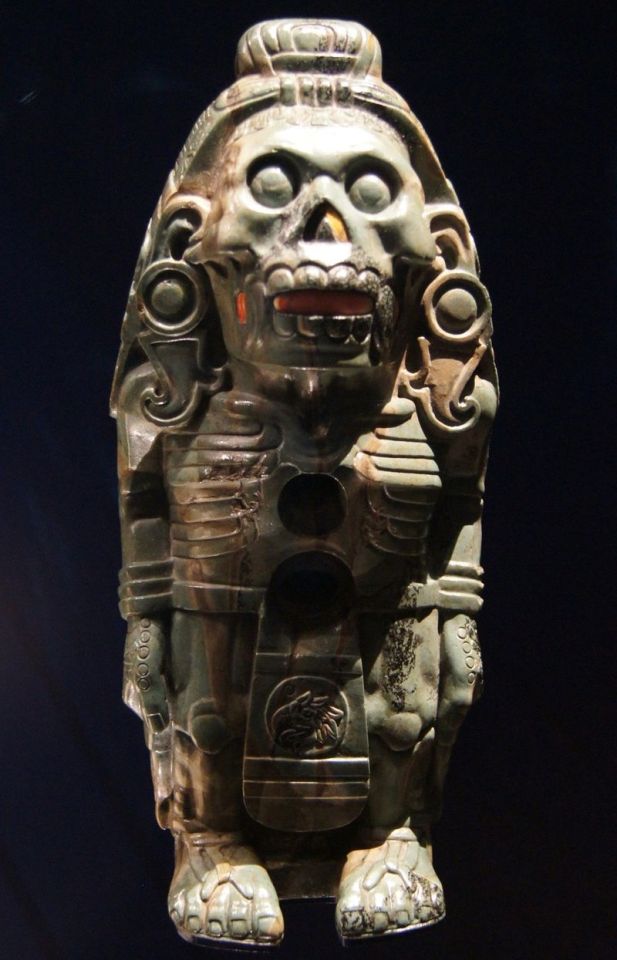
Xolotl (pronunced Sho-lo-t followed by an L like sound that doesn't exist in the English language) was a Mesoamerican god associated with many things, including fire, lightning, disease, deformity, twins, the Mesoamerican ball game, death, dogs, the planet Venus as the evening star, twilight, shapeshifting, and monsters. Xolotl was the twin and sometimes companion of his more famous brother Quetzalcoatl. Xolotl was thought to guide the dead in their journey through the underworld, and to guide the sun through the underworld each night. Xolotl is usually depicted as either a dog anthro, a man with a dog head, or a dwarf skeletal jester. Xolotl is usually depicted missing eyes. Xolotl seems to have been feared by the Aztecs and especially hated by the Spanish, but I have a more favorable view.
Some of the most prominent myths about Xolotl involve the story of the fifth sun, or how the current world was made from the previous, destroyed one.
The first myth involves the recreation of humanity. The tales differ as to whether Quetzalcoatl was responsible, Xolotl was responsible, or if it was a collaborative effort. The humans of the fourth world were destroyed, and humanity had to be brought back. To this end Xolotl and/or Quetzalcoatl traveled to the Aztec underworld, Mictlan and met with its king, Mictlantecutli. The god(s) asked to gather the bones of the previous humans so they could be created anew. Mictlantecutli. Mictlantecutli gives them tests but later decides against letting them gather the bones. Xolotl and/or Quetzalcoatl fall into pit, breaking the bones in the process which is why people have different heights. The bones are later resurrected. The versions of this tale differ as to which god went to Mictlan and whether they did tests for Mictlantecutli or simply stole the bones.
In the second myth, the gods are sacrificing themselves in a fire to create a fifth sun for humanity because the previous one went out. They choose Nanahuatzin, a poor and humble god with syphilis and some relation to Xolotl to become the moon; and Tecciztecatl to become the sun because he is wealthy and strong. However, Tecciztecatl is unable to throw himself in the fire when the time comes, so Nanahuatzin becomes the sun instead. Tecciztecatl is sacrificed after and becomes the moon (and also the man on the moon), but has a rabbit thrown at his face which is one explanation for the rabbit people sometimes see.
Later, Xolotl is the last to be sacrificed to the new sun. In some versions this is because he was the executioner for the previous gods. However, in some tales he refuses to sacrifice himself. Xolotl begs and cries until his eyes literally fall out but this does nothing. Xolotl transforms to escape Ehecatl who has been executing other gods to make the sun move. Xolotl at first transforms into a corn plant with two stalks, then an Agave americana, and finally an Axolotl amphibian. But he was still caught in the end.
What I find most interesting about Xolotl is his relation to disability. Since deformities are among Xolotl's best known domains, he could be considered a god of disabilities as well. Xolotl is also a god of monsters, and it's worth mentioning that the Nahua word "Xolo" which his name is derived from and means monster, is used for both mythological monsters and those with physical abnormalities, much like the Latin word "Monstrum". (I think in literature analysis the themes of monsters as outcasts could be explored more) In many, perhaps even most historical (and unfortunately even modern) societies the attitude towards those with disabilities has been very negative. In the Aztec world twins were considered unnatural, and sometimes one of them would be murdered shortly after birth. Wikipedia mentions an speculation by Eduard Seler that resonates with me: that Xolotl represents the murdered twin who dwells in the underworld while Quetzalcoatl is the living one who is cherished in the world of light.
Another connection with Xolotl and disability is that he was sometimes depicted as a jester with dwarfism. It's relevant the jesters around the world were often disabled. European court jesters were known for having the freedom to criticize and mock royalty, and were sometimes selected from the intellectually disabled because they could not be held responsible for what they said. Additionally, the Spanish during the colonization of the Aztecs sent some Aztec jesters to Spain, who were described as humpbacks.
This is what I find most interesting about Xolotl, that he is a reflection or shadow of society. Historically Xolotl was often considered a sinister god, but when society is itself sinister who is to be believed? My view of Xolotl is more favorable. The god of the disabled is feared because the disabled are hated. Xolotl is the outcast, who is hated and feared yet has done no wrong. Xolotl is the murdered twin, who looks upon the world of light and life, from a place of darkness, the world he was not given, never had the right to enjoy. He is the god who is looked upon with disgust due to his role in hardship, yet is the only one who stays with you through that hardship the entire time. Xolotl is the disabled child, who is called a child of shame and hidden away in some institution to be forgotten by their more privileged relatives. Xolotl is viewed with contempt, but his domains are just as necessary to the universe's function as any of the more handsome gods. The janitor, who is viewed with contempt and disgust yet whose works are vital for society.
The "evil twin" Xolotl, misunderstood twin and hound of Quetzalcoatl who lives in the world's shadow, watching the world of life and guarding the light of the sun through the underworld.
#LONG POST#xolotl#aztecs#aztec mythology#aztec religion#aztec gods#mexica mythology#mesoamerica#ableism cw#cw ableism#ableism tw#ableism mention#infanticide mention#filicide mention#mesoamerican mythology#infodump#infodumping
131 notes
·
View notes
Text
You know being Mexica (Aztec) I really want to know who on the failbetter staff knows our myths because the stars floating in cosmic horror that wants everything dead eating souls to stay alive is the most Mexican fucking thing. That’s literally what some of the sacrifices we would do was for. Gotta feed them stars.
#failbetter games#fallen london#sunless skies#sunless sea#just mexica things#mexica mythology#mexica religion#i love this setting so much#i'm sure my ancestors would too#if only in a HEH WE WERE RIGHT kinda way
114 notes
·
View notes
Text

Hello friendos and welcome to my blog! I’m Al (non binary, Chicane, they/them/él) and I make a comic called Husk: Even Death Fears the End. If you like supernatural shenanigans, Mexica mythology and asexual Latine leads, you’re gonna have fun here!

At this time, Husk is available in early access on my Kofi. If you’d like to read it you can do so by tipping a coffee there.
You’ll also get access to exclusive sketches and artwork and get to see pieces there before they are posted anywhere else! As a thank you for your support, you’ll also get Husk wallpapers for your devices! 📱 💻
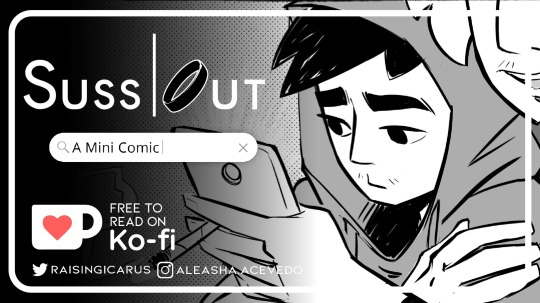
I also have a short comic called Suss|Out that’s FREE to read on my Kofi!
If you like what you see and want to support a queer Latine creator, please follow, like and reblog 💜 it helps out a ton and I appreciate it!
#queer artist#indie comic artist#indie comics#husk comic#mexica mythology#asexual#asexuality#queer comics#queer comic#aztec gods#ace characters#ace pride#queer creator#independent comics#webcomic#mexica gods#indiecomics#aztec mythology#latinx comics#mexican mythology#gay comics#lgbtqia#nonbinary#comics#aces in comics
56 notes
·
View notes
Text
Blanco y Negro
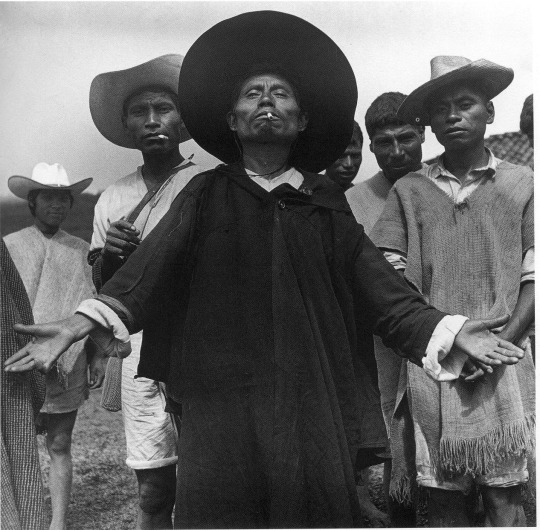
40 notes
·
View notes
Text
Sorry I want to post this drawing of the couple I like.
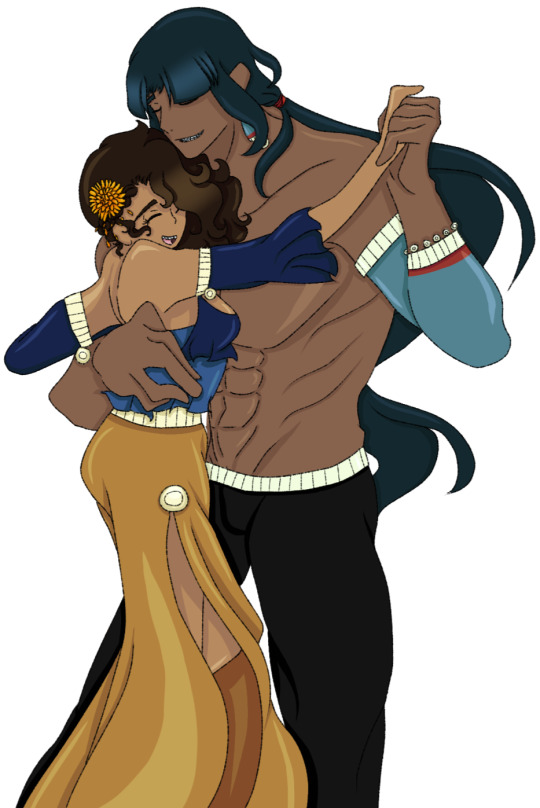
I love to draw them
5 notes
·
View notes
Text

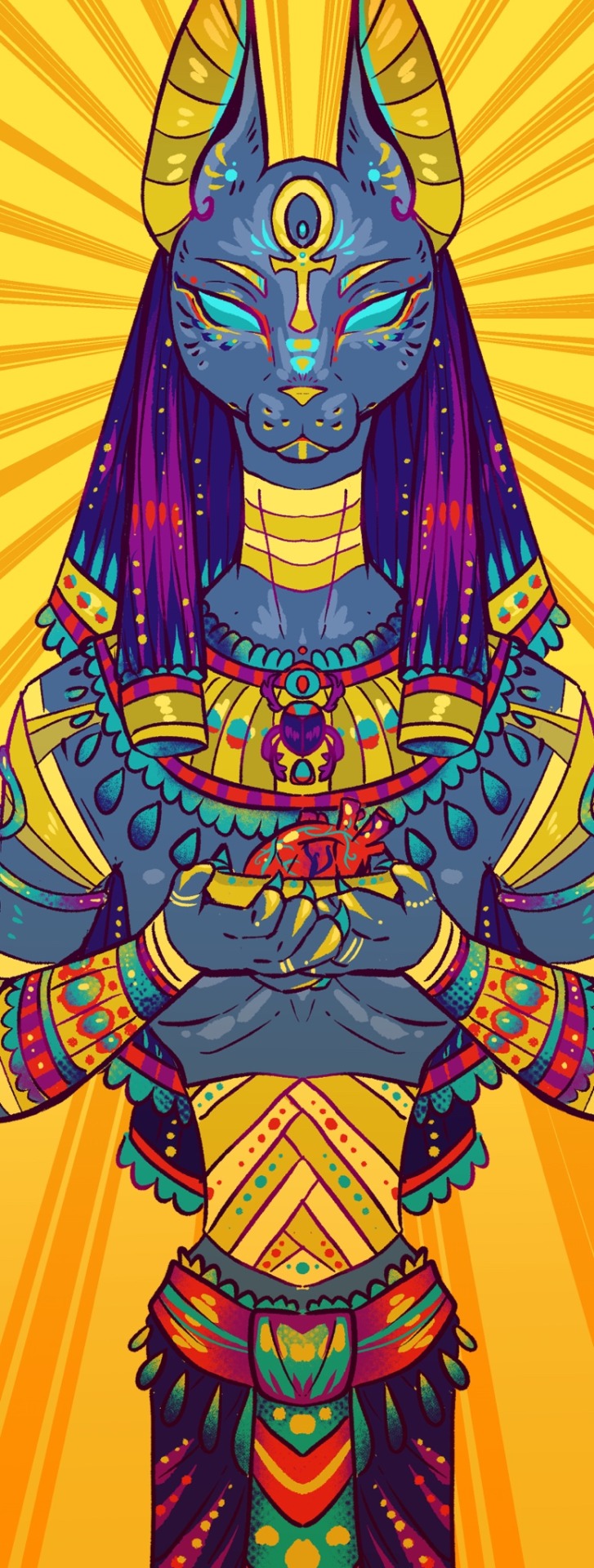
Dog gods
Half of my illustration and design final
#mythology#egyptian#ancient egypt#egyptian mythology#god anubis#Anubis#aztec mythology#aztec#mexica#aztec gods#xolotl#xolo dog#indigenous art#anthro furry#anthro#animal gods#furry
369 notes
·
View notes
Text
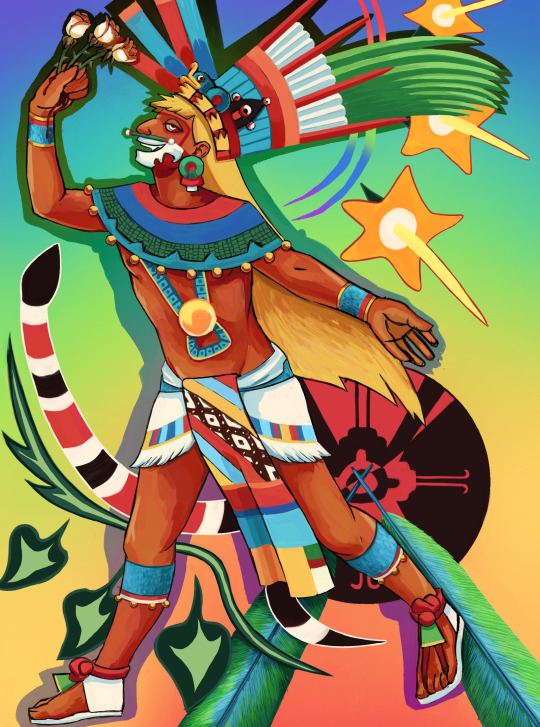
Xochipilli the prince of flowers, patron of two spirits
44 notes
·
View notes
Text

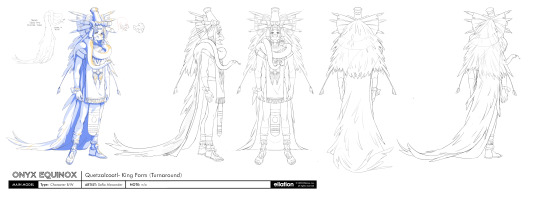

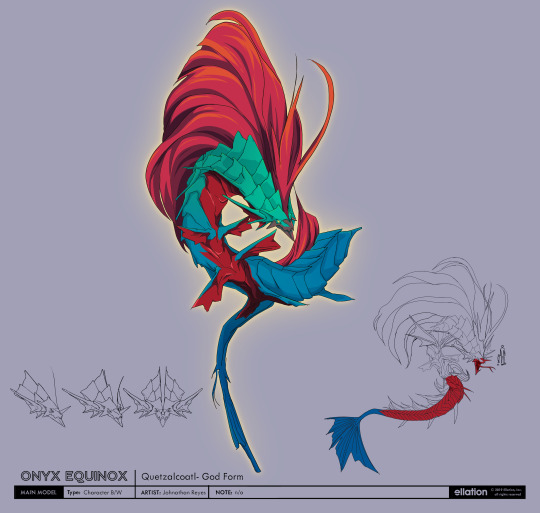

Onyx Equinox: Quetzalcoatl
The gods took many forms in Onyx Equinox. Possession, King, and God form.
- Possession design is when a god takes over a human. A human vessel is too fragile to contain the power of a god, and it will start breaking down by slowly taking on the attributes of that god until it falls apart.
- King design is their godly human likeness.
- God design is the beast-like form they're most known for.
#onyx equinox#onyxequinox#quetzalcoatl#aztec mythology#aztec#mexica#mesoamerica#art#character design
255 notes
·
View notes
Text
goddess of love Xochiquetzal

36 notes
·
View notes
Text
Taylor swift fans are offering friendship bracelets to Tlaloc (Aztec god of rain) so the concerts won't be ruined by sudden storms or rain.
Lmao


40 notes
·
View notes
Text
Just a redraw of Huitzilopochtli and Coyolxauhqui, but this time I get inspired by Caravaggio.

The first draw (left) and Caravaggio's art (right).


#huitzilopochtli#coyolxauhqui#mexican#mexica#mexican artist#mexican mythology#mythology#aztecinspired#aztec#azteca#aztec mythology#aztec gods#redraw#cartoon art#drawing#fanart#artists on tumblr
40 notes
·
View notes
Photo

Read HUSK while it’s in Early Access now on Kofi!
A mortal youth strikes a forbidden alliance with the guide of the dead, but when it makes them the target of a powerful deity, their best chance at survival lies in a power that may just destroy them both.
HUSK, where gods, gangs and gays collide! Featuring asexual leads, Mexica mythos, and a dash of horror, it’s a ride you don’t want to miss.
#indie comics#indiecomics#latinxcomics#latinxcreate#Mexica Mythology#mexica gods#xolotl#quetzalcoatl#tezcatlipoca#zylix cuevas#queer artist#queer comic#asexuality#asexual#husk comic
60 notes
·
View notes
Text
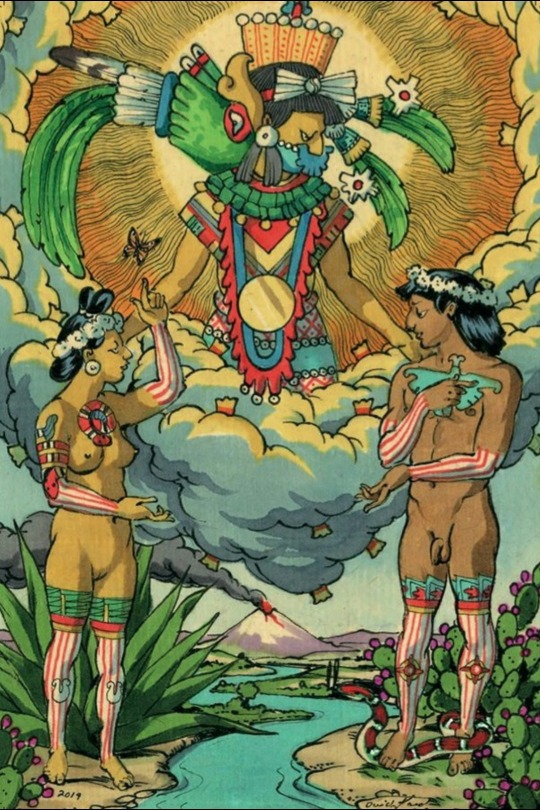
Mi Corizón Mexica
"This is the Lovers card from my Tarot Yohualli Ehécatl. In it, Xochiquetzal appears joining a couple. It is a reminder that love is composed of both divine and worldly elements, and it is the union of complementary opposites"
18 notes
·
View notes
Text
Xochipilli, excitedly: Heeyy!!
Quetzalcoatl: Hey, someone's excited.
Huitzilopochtli, deadpan and sleep deprived: Yeah, and it's making me sick.
#mythology#classical mythology#incorrect mythology#incorrect quotes#aztec mythology#quetzalcoatl#incorrect aztec gods#incorrect aztec mythology#aztec gods#aztec#mexica#xochipilli#huitzilopochtli#queueueueueueueueueueueueueue#queuetzalcoatl
19 notes
·
View notes

